Request Quote
Home | Our Blog | Best Roofing Materials for Your Homes: Pros and Cons Comparison
Reviewed by Tomas Kalkys. President.
Qualifications: More than 20 years of experience in residential and commercial exterior remodeling.
Founding farther of Legacy Service.
Written by LegacyUSA Team
posted on Aug 30, 2020
Get Estimates From Roofing Pros
Installing or replacing your home’s roof isn’t a decision that should be taken lightly. Depending on the material you choose, the roofing type you select can last decades. Asphalt shingles are designed to last between 20-40 years while metal roofing is designed to last between 40-70 years. Other types of roofing materials will differ in lifespan.
However, lifespan isn’t the only factor to determine which type of material for roofing you should choose. Other factors will include the budget you set for your roof and home, the aesthetic you wish to have that will match with the style of your home, functionality, your surroundings, and state building codes.
Not a real zip code.
In this article, we’re going to discuss all the different types of residential roofing materials for your home, and compare the pros and cons. It’s important to understand the differences between the top roofing materials so that you can make an educated decision when the time comes.
At Legacy Service, we offer residential roofing installation and replacement services for homeowners throughout southeastern Pennsylvania, New Jersey, and Delaware. Please feel free to contact us at any time if you’re looking to install or replace your roof. By contacting us, you can schedule an appointment for a free consultation to talk about ideas for roofing.
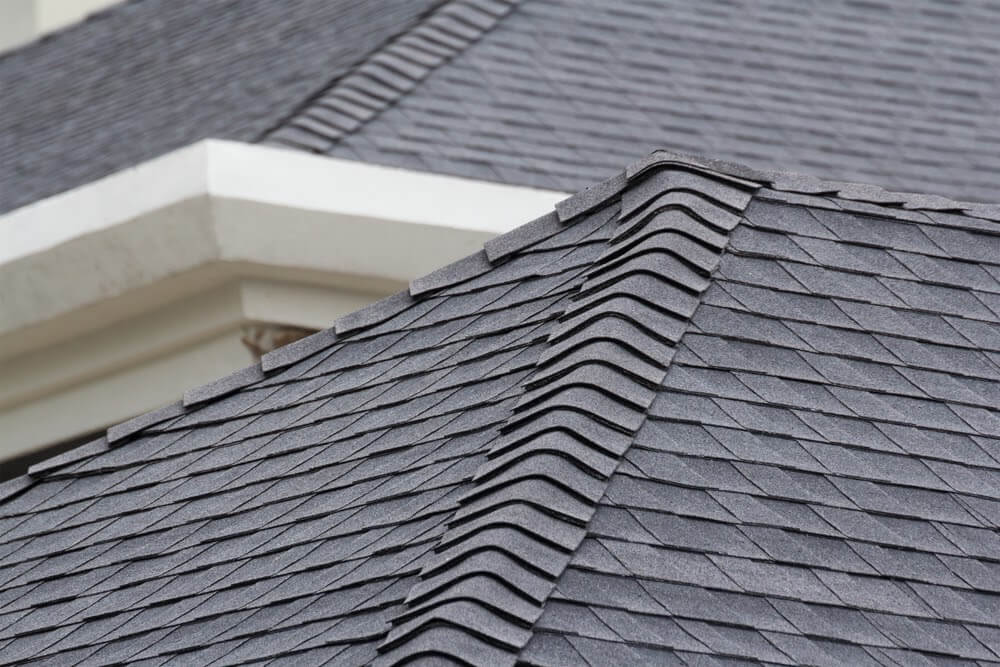
Asphalt shingles protect more than 75% of residential homes in the United States. However, that number has been shrinking in recent years due to the increasing popularity of metal roofing, which is typically designed to be more durable and energy-efficient.
Asphalt shingles continue to dominate the roof options market, though, because they are not only attractive and easy to install, but they’re also one of the most affordable modern roofing materials. This roofing material is chosen across the nation because of its effectiveness throughout many different environments and climate conditions. But if you live in an area that’s prone to hailstorms, it’s recommended that you get impact-resistant shingles.
This roofing style has been the industry standard for over 150 years. Reasons for this include the fact that it’s incredibly resistant to water, it’s cost-effective, and it can be made to resemble slate, clay, or tile shingles. In this section, we’re going to cover two of the best types of shingles, which includes fiberglass and organic asphalt. This will help you decide which one would work best for your home. If you need help selecting new roof materials, give the experts a call. We’re always ready to help you out with a roofing installation or replacement here at Legacy Service.
Fiberglass shingles are known to be a more lightweight and environmentally friendly roofing material option. The reason for this is how they’re made. They’re made of a woven fiberglass base mat, topped with ceramic granules to shield the shingles from harmful UV rays, and covered with a waterproof asphalt coating. Because of this, less asphalt is needed to give fiberglass shingles their strength and durability. This type of roofing is great for many buildings because a tough and resistant material that won’t change shape or dry out. It’s one of the most popular roofing shingle materials.
Organic asphalt shingles differ from alternative roofing materials since they begin with often-recycled paper that’s saturated in asphalt and covered in granules. They may be heavier and more difficult to work with than fiberglass shingles, but they’re typically more stable when there are high winds.
However, organic shingles have become mostly discontinued over the past decade because of their tendency to dry out, so they become less waterproof and more susceptible to excess moisture absorption. It may have once been a popular roof choice in the past, but now you might not even be able to find a company that will install it for your home.
There are plenty of reasons why you should choose asphalt shingles as your material for roof construction. Their advantages include:
There are also a few disadvantages to choosing asphalt shingles. Here are the reasons why you might want to select a different type of roofing material for your home:

Wood shingles and shakes are another roofing type that many people choose to cover their homes with. However, there are a few differences between the two that may affect your decision.
In this section, we’re going to cover the differences between wood shingles and shakes so that you can make an informed decision for your house. At Legacy Service, we offer installation and replacement services for cedar roofing. You can’t deny that wood (or cedar) roofs have a special elegant and classical look that’s the definition of a quality roof. It’s the perfect material for homeowners looking for a timeless design. So, what are the differences between wood shingles and shakes?
Not a real zip code.
Wood shingles and shakes come from the same material, but they are designed and manufactured differently. Wood shingles are machine-cut, and they have a smooth surface and cleaner edges, which help produce a more uniform appearance. Wood shakes typically have a more rustic appearance since they’re hand-cut from blocks of wood. They’re also thicker, so they’re usually more expensive than wood shingles.
Wood shakes are known to provide a thick, textured appearance, which gives your roof beautiful depth and dimension. Wood shingles are more uniform, and they’ll give your roof a smooth, flat appearance. We’re going to cover the advantages and disadvantages of wood shingles and wood shakes in the section below.
Although wood shingles and shakes are similar and made from the same material, they each have their own benefits. The advantages of choosing shingles for your house include:
The disadvantages of choosing wood shingles include:
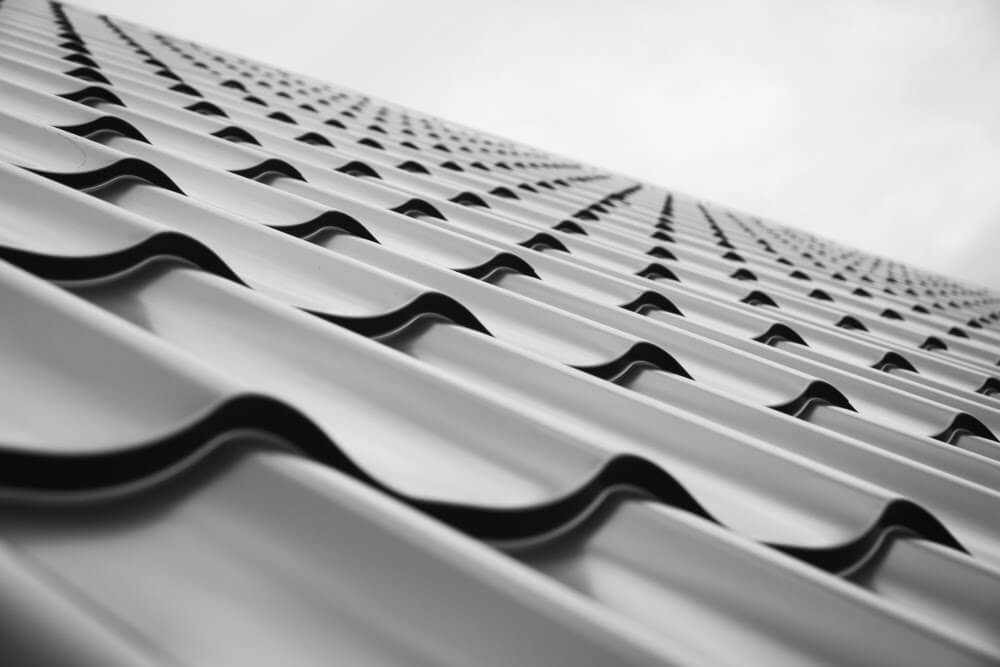
Metal roofing is considered one of the most durable types out there. While it might have taken a backseat to asphalt shingles for residential homes over the past few decades, metal has had a resurgence in popularity in recent years because people are realizing how resistant it is to the elements. It also has an incredible lifespan, lasting between 40-70 years in many cases.
A metal roof is one of the best roofing materials for homeowners and one of the best investments you can make for your home. It can also boost your home’s value by delivering beauty, energy efficiency, longevity, and environmental sustainability.
The part that usually turns people off about metal roofing is that it can be expensive initially. However, over time, your investment will pay off since the roof cover type is so durable and designed to last so long. There are plenty of styles for you to choose from, so get in contact with a local roofing expert today to get started with your project.
At Legacy Service, we’ll provide you with a metal roofing installation or replacement. You can schedule a free consultation with one of our technicians by contacting us at 215-798-9790 or visiting https://legacyusa.com/contact/.
The pros and cons are listed below:
Metal roofing is second to asphalt shingles as a popular type of roof for houses. The advantages of this high-end roofing product include:
Metal roofing also has its disadvantages compared to other roofing materials. The cons include:
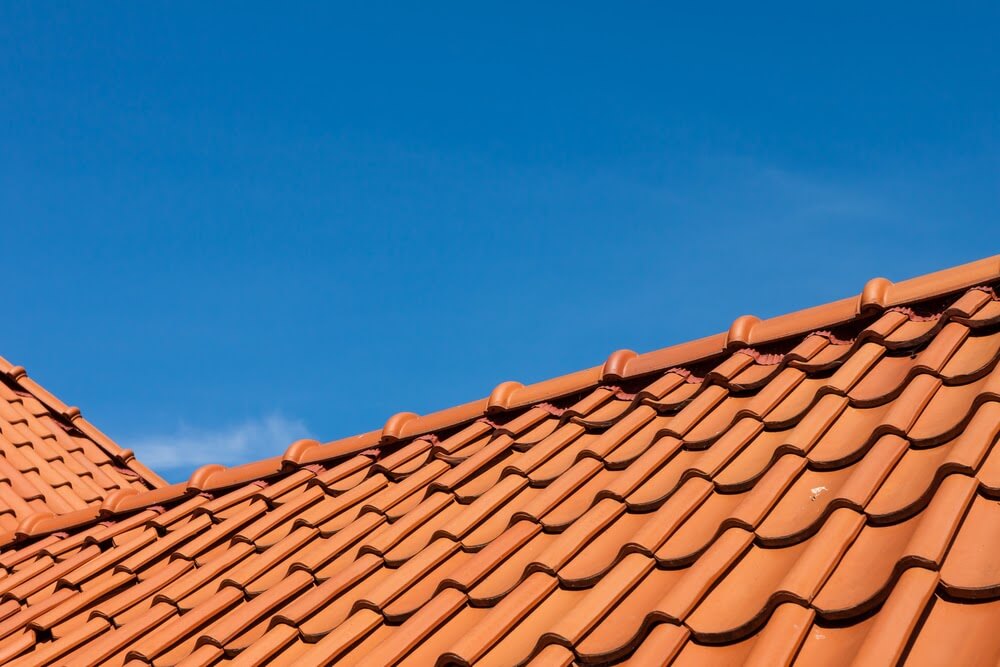
Roof tiles are uncommon in the northeastern United States, but they can be found on plenty of homes in California, coastal Florida, and the Southwest. Although tiled roofs are beautiful and durable, they can be heavy and expensive since they’re typically made from molded, tinted concrete. This is a good roof choice for regions that experience hot weather throughout the year or are exposed to salt air. And many of the styles are excellent at shedding rainfall, so tiles are also ideal for climates that experience bursts of heavy rainfall.
Since roof tiles are heavy, you’ll need to make sure your roof can handle it structurally to be able to support the weight. If you live in the northeast, you probably won’t have much benefit from this type of roof, but if you’re still considering it, consult an expert to get their opinion. They’ll be able to tell you if it’s worth it depending on your wants and needs.
Some of the tile styles include Spanish tile, scandia tiles, double Roman tiles, flat shake tiles, pantiles, barrel tiles, French tiles, Riviera tiles, and more. Depending on what you choose, you can match virtually any aesthetic goal.
The pros and cons of roof tiles are included below:
So, why would homeowners choose roof tiles for their home? They offer plenty of advantages, which include:
There are a few reasons why people choose other materials as new roofing products instead of roof tiles. The disadvantages include:
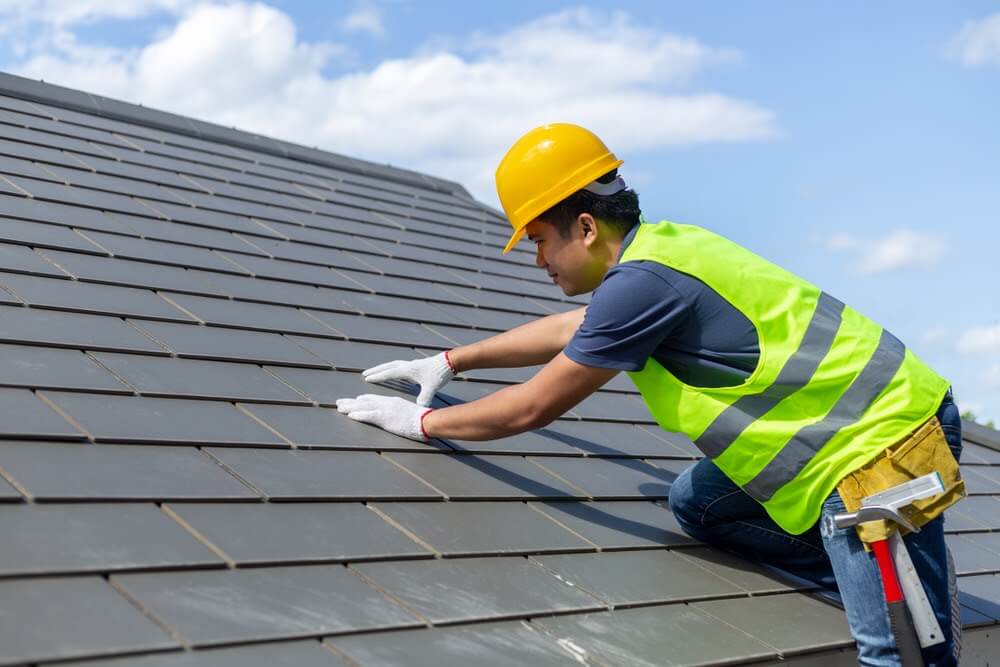
With slate tiles, whether natural or synthetic, there’s no question that they add a certain kind of beauty to any building they cover. Slate is often forgotten about in the roofing world (especially when it comes to residential homes), but it’s actually one of the longest-lasting materials on the market today. In recent years, it’s become increasingly popular thanks to its beauty and long lifespan.
Whether you choose natural or synthetic, just know that you’re making a good choice with slate. At Legacy Service, we provide synthetic slate installation and replacement services for homeowners throughout southeastern Pennsylvania, New Jersey, and Delaware. We understand that people choose slate because of the appearance it gives their home. However, many homeowners are turned off by the cost of natural slate. That’s where synthetic slate comes in. It has the look and feel of authentic slate at a much lower cost.
If you’re interested in synthetic slate, contact our team of roofing experts. We will transform your home so that you can have the peace of mind that you deserve. Our consultants will also advise you on the proper use of additional features and accents like copper flashing and valleys. This will ensure the traditional style of your new roof.
Natural slate tiles are one of the most durable types of roofing you can choose for your home. Slate is made of naturally occurring stone, so it’s relatively unaffected by extreme weather conditions, including high temperatures, strong winds, and hail. It’s also a long-lasting material, usually lasting for at least 40 years, with the best slate even lasting from 75-100 years.
However, natural slate roofs are incredibly heavy and highly expensive. This causes most homeowners to rethink it. Fortunately, if you’d like your home to have the appearance of slate without the high cost and heavy weight, there’s another choice. It’s called synthetic slate.
Synthetic slate may look like authentic slate, but it’s composed of rubber and plastic materials instead of stone. Manufacturers will offer a wide variety of styles that will complement almost any home, from French colonial to contemporary. Manufacturers and installers say that synthetic slate is much less expensive to install than natural slate, and it can even last longer. They’ll also maintain a good appearance for many years to come.
Since synthetic slate weighs much less than natural, it allows for simpler and quicker installation. However, they do come with a few disadvantages of their own, which is why many homeowners opt for asphalt shingles or metal roofing instead. In the next section, we’re going to review the pros and cons of synthetic slate tiles.
Why do people choose synthetic slate tiles over other types of roofing materials? The benefits include:
Synthetic slate isn’t without its disadvantages, though. Here’s why people choose other materials instead:
More homeowners would choose solar for their home if the panels weren’t so large and obtrusive. Tesla is attempting to change that with their new solar tiles that look like standard tiles. However, only a handful of them have been installed so far, so there is suspicion that the product is nothing more than vaporware.
With that being said, there are two main types of Tesla solar tiles. They include:
Why do homeowners choose Tesla solar tiles? The benefits of this roofing material include:
What are some of the reasons you should forgo Tesla solar tiles? The cons include:
Not a real zip code.
If your home has a flat roof, you still have plenty of options for roofing materials with high ratings. The most common ones include PVC membrane, EPDM rubber, TPO, modified bitumen, a built-up roof, a spray-on roof, and more. In the section below, we’re going to discuss the different types so that you can make an educated decision about the best type for your house.
Legacy Service provides installation and replacement services for flat roofs. To learn more about how we can help you, please feel free to contact us at any time. Without further ado, here are the flat roofing material options:
PVC membrane is designed to work with all kinds of residential and commercial single-ply roof construction as well as re-roofing applications and repairs to existing roofing systems. This type of material is suitable for both mechanical and fully-adhered roofing systems. As far as colors go, you’ll most likely have the options of white, gray, and tan. Light colors are typically reflective and can help reduce your home’s energy bills.
Membrane roofs are the latest in roofing technology. A PVC roof that’s manufactured and installed well can last up to 25 years. Many prefer this material for their flat roof.
EPDM, which stands for ethylene propylene diene monomer, is another one of the most popular flat roofing types. There are many reasons why homeowners choose EPDM. For starters, they are environmentally-friendly due to the fact that they’re recyclable. They also naturally reflect sunlight, which not only helps the environment but also may decrease your electrical costs.
EPDM is also designed to last for at least 20 years, which can even be doubled with regular maintenance and sealing. Unlike traditional rubber, EPDM is incredibly resilient. It’s flexible enough to fit around pipes and gutters, and it won’t crack from extreme dryness or moisture.
Another common material used for flat roofing is TPO (Thermoplastic Polyolefin). It’s one of the best materials to install for your flat roof. It’s not only an inexpensive option, but it also has a decent lifespan; it can last between 10 and 20 years. In most cases, TPO will be installed as a white coating, which has all the same energy-saving properties as PVC roofs.
TPO is a single-ply roofing membrane that’s one of the fastest-growing systems on the market, especially for commercial buildings. These systems are made from a single layer of synthetics and reinforcing scrim.
Modified bitumen is typically known as the budget-friendly option when you’re comparing flat roofing options. This type of material uses an asphalt membrane as the roof’s base. Since it is typically inexpensive, its surface is susceptible to cracking and blistering, which may reduce the lifespan of your roof between 10-15 years. However, the price alone makes it an appealing choice for some property owners, especially those with commercial buildings. Contact your local roofer to schedule a consultation if you’re considering modified bitumen.
Another one of the most common flat roof types is built-up roofing (BUR). It’s considered the grandfather of flat roofs, going back about 120 years. It’s also the perfect solution for a roof with a low pitch. These systems are also known as gravel or tar roofs, and they’re generally made up of alternating layers of fabrics and bitumen that create a membrane style material. They can have a different number of layers (or plies) depending on what you need.
Built-up roofs also work well in warmer climates and have an average lifespan of 15-30 years.
Spray-on roofing, also known as silicon spray, is actually one of the easiest types to install. It can be installed right over an existing roof with little to no prep work other than cleaning. Just remember to apply the spray evenly and delicately. Since silicon is one of the premier spray applications, it can be on the more expensive side, though. Spray-on typically has a lifespan of up to 20 years. One of the biggest advantages is being able to forego any seams that you might have when using membranes.
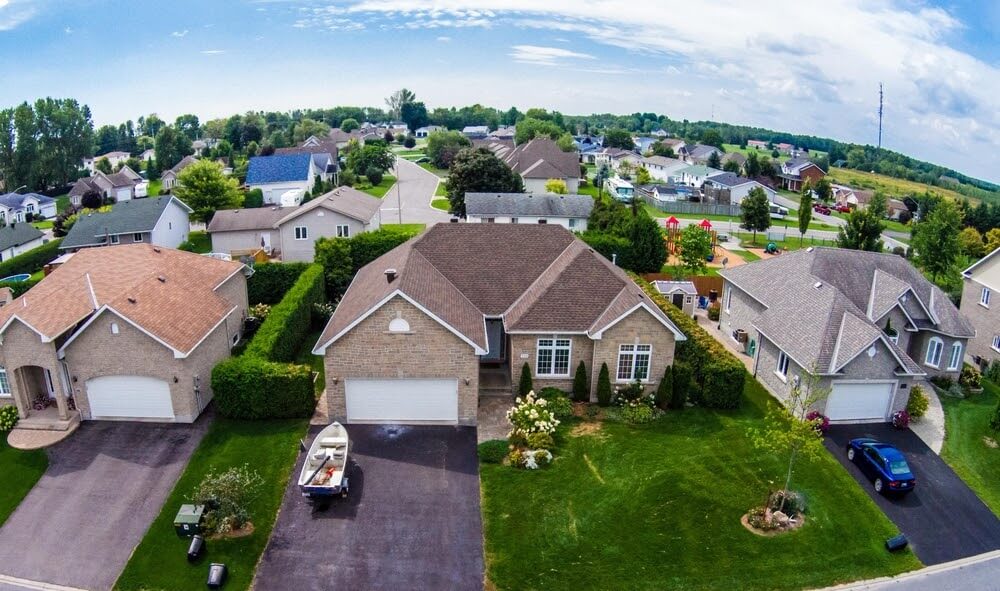
The type of roofing you should choose for your home depends on a number of factors, including your location, style of house, and budget. We’ve listed the materials and their brief summaries below:
If you’re looking for residential roofing installation or replacement services in southeastern Pennsylvania, New Jersey, or Delaware, please call our team at Legacy Service at 215-798-9790.
Posted on Aug 30, 2020 in Roof
Read our news
HOW LONG SHOULD A ROOF LAST? ELEMENTS
A lot of elements play a role in maintaining the integrity of the roof, but as a homeowner, the most important components to pay attention to are the underlayment, ventilation, and material.
DIFFERENT TYPES - DIFFERENT LIVES
Choosing the best roofing material for your home is the first important step in ensuring that you have the highest quality roof possible.
METAL ROOF VS ASPHALT SHINGLE ROOFING
Two of the most popular roofing materials on the market are metal and asphalt, and both offer different pros and cons to a customer.
Pros and cons of Asphalt Shingle Roofing
Replacing a roof is an expensive decision, and cannot only come down to cost.


